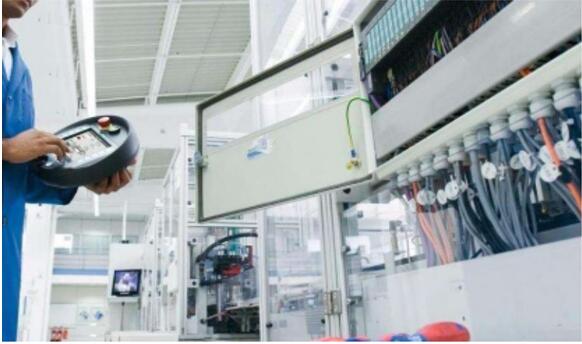What are the advantages of spectral confocal sensors compared to traditional sensors?
The core difference between spectral confocal sensors and traditional sensors stems from their “white light chromatic aberration + confocal filtering” technology principle—calculating distance by analyzing the focal positions of light at different wavelengths, without requiring mechanical scanning or contact. Conversely, traditional sensors (such as laser triangulation, capacitive, inductive, or contact micrometers) predominantly rely on single physical parameters (reflected angle, capacitance, mechanical displacement, etc.), inherently limiting their precision and material adaptability. Below, we analyze their significant advantages across six core dimensions.
In terms of measurement accuracy, spectral confocal sensors achieve nanometer-level performance, breaking through traditional limitations. White light contains continuous wavelengths from 400 to 700 nm. High-precision spectrometers can subdivide wavelength differences to below 0.1 nm, corresponding to a distance resolution of 1 to 10 nm. Conventional sensors typically operate at the micrometer level. Laser triangulation sensors are limited by spot size and reflectivity, achieving a maximum precision of 0.5-10μm. While contact micrometers can reach 0.1-1μm, they risk scratching workpieces. For instance, in measuring semiconductor chip lead bonding height (bonding points are only 5-20μm), traditional laser triangulation sensors are prone to errors due to uneven reflection from metal leads. Spectral confocal sensors, however, can stably output 1nm-level data.
In terms of material adaptability, spectral confocal imaging is virtually unaffected by an object's color, reflectivity, or hardness. For black, low-reflectivity objects (e.g., rubber, carbon fiber), laser triangulation often loses signals due to weak reflections, whereas spectral confocal captures data using specific wavelengths. For soft, deformable objects (e.g., silicone, biological tissue), contact sensors cause deformation, but spectral confocal's non-contact nature and low spot energy eliminate damage risks. For non-metallic insulating materials like ceramics and glass, capacitive and inductive sensors become completely ineffective, whereas spectral confocal enables universal measurement. For instance, in thickness inspection of black rubber seals in new energy vehicles, traditional triangulation lasers cannot achieve stable measurement, while spectral confocal delivers repeatability accuracy of ±20nm.
Transparent/translucent object measurement is a “critical blind spot” for traditional sensors, yet spectral confocal imaging provides a perfect solution. Laser triangulation suffers from data drift due to multiple reflections on both surfaces of transparent objects. Capacitive sensors can only measure surfaces and cannot penetrate materials. Spectral confocal, however, filters out out-of-focus reflections using the confocal principle. It then employs wavelength stratification—short wavelengths focus on the upper surface, long wavelengths on the lower surface—enabling simultaneous measurement of thickness and surface distance in a single scan. For instance, in smartphone glass cover inspection, traditional laser triangulation requires separate measurements of upper and lower surfaces followed by thickness calculation (prone to errors from positioning deviations). Spectral confocal delivers ±50nm thickness accuracy and ±10nm flatness precision in a single scan.
In terms of response speed, spectral confocal technology adapts to high-speed dynamic scenarios. Traditional non-contact sensors (such as laser triangulation) rely on mechanical scanning, with response speeds limited to 1-10kHz. Spectral confocal achieves response speeds of 10-100kHz through full-spectrum parallel acquisition, eliminating the need for mechanical movement. Take high-speed inspection of lithium battery electrode sheets (production line speed 1m/s) as an example: traditional laser triangulation sensors often miss <5μm micro-protrusions due to slow response, whereas spectral confocal technology captures real-time data at every point, ensuring zero false negatives.
Regarding measurement blind zones, spectral confocal technology also breaks through traditional limitations. Conventional sensors (such as laser triangulation) typically have near-field blind zones of 1-5mm, making them incapable of measuring deep hole inner walls or minute steps. Spectral confocal blind zones can be reduced to below 0.1mm, or even eliminated entirely. Additionally, laser triangulation is sensitive to surface inclination (with significant errors above 5°), whereas spectral confocal maintains high precision within ±30° tilt angles without requiring frequent recalibration. For instance, in measuring steps on the inner walls of deep holes in aircraft engine blades (hole depth 10mm, step height 50μm), traditional sensors fail to reach due to their blind zones, while spectral confocal achieves precise detection.
Additionally, spectral confocal technology offers robust anti-interference capabilities and supports simultaneous multi-parameter measurement. In industrial environments, ambient light, vibration, and oil contamination often cause signal distortion in traditional sensors (e.g., laser triangulation affected by ambient light, capacitive sensors drifting due to oil contamination). Spectral confocal technology, however, employs dual anti-interference mechanisms—confocal filtering and spectral analysis—and its lack of mechanical components provides superior vibration resistance. Traditional sensors typically measure single parameters, whereas spectral confocal can simultaneously output data on transparent object thickness, refractive index, and surface micro-morphology in a single measurement. For instance, in contact lens inspection, traditional methods require two separate measurements (taking >10 seconds), while spectral confocal completes the task within 1 second.
Product recommendation
TECHNICAL SOLUTION
MORE+You may also be interested in the following information
FREE CONSULTING SERVICE
Let’s help you to find the right solution for your project!


 ASK POMEAS
ASK POMEAS  PRICE INQUIRY
PRICE INQUIRY  REQUEST DEMO/TEST
REQUEST DEMO/TEST  FREE TRIAL UNIT
FREE TRIAL UNIT  ACCURATE SELECTION
ACCURATE SELECTION  ADDRESS
ADDRESS Tel:+ 86-0769-2266 0867
Tel:+ 86-0769-2266 0867 Fax:+ 86-0769-2266 0867
Fax:+ 86-0769-2266 0867 E-mail:marketing@pomeas.com
E-mail:marketing@pomeas.com
